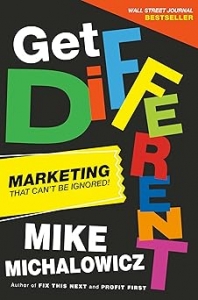Tell Them How You Ship the Diamonds
In Tuesday’s blog post I used the “Hear your happy holidays” headline of an AudioNova ad in the Indianapolis Star to illustrate the importance of results-driven marketing, suggesting that content marketers need to focus on results of using the product or service rather than on its features…
There’s more to it than that, however. As Seth Godin points out in his book This Is Marketing, as content marketers we need to differentiate the path our business owner or practitioner clients choose to take in helping their customers achieve those results. Diamonds, for example, can be transported in an armored car or put in a package and sent by mail. What is more likely to be valued by your customer – speed of delivery or safety? Dedicate effort to empathize with your audience, comprehend their obstacles, and reflect on how your offerings can assist them in reaching their objectives, Godin urges content creators.
“To put it as succinctly as possible, a key differentiator is a brand’s distinct and unique value that sets itself apart from its competitors within the market,” brandmasteracademy.com explains. Also known as the USP (Unique Selling Proposition) the differentiator answers the question: “Why should I choose this brand over its competitors?”
Interestingly, as Elizabeth Harr and Lee Frederiksen, PH.D point out in hingemarketing.com, many so-called differentiators make a company sound more like their competitors! To be effective, the authors explain, a differentiator must meet three criteria:
- It must be true.
- It must be relevant to potential clients.
- It must be provable.
In Get Different: Marketing That Can’t Be Ignored, Mike Michalowicz remarks that, to customers, “better” might not actually be better. Different is better.The author tells business owners to discover their best “est” – Are you the oddest? Hokiest? Sharpest? Fastest? Safest?
In all your content marketing, tell them just how AudioNova will help them hear the holidays. What about your diamonds? Will you be shipping them via the U.S. Postal Service or using armored cars?






Follow us online!